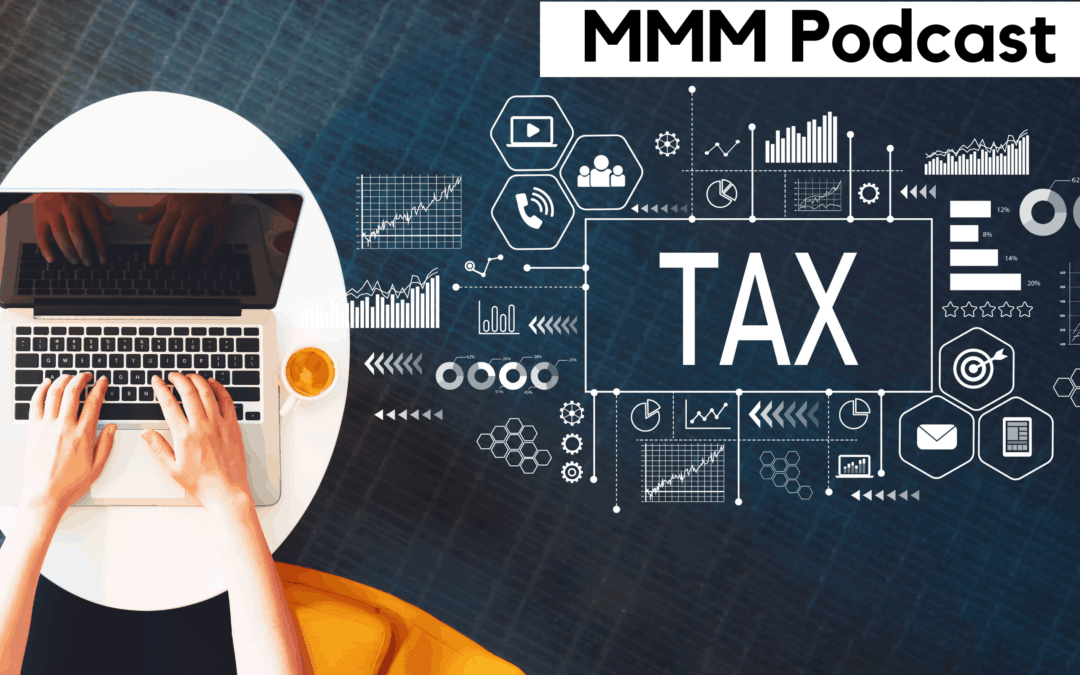Money Meets Medicine Podcast
7 Ways to Avoid Early Retirement Tax
Advocates of FIRE (Financial Independence Retire Early) often talk about the end result of using their model: freedom with your time, money, and resources. And far be it from me to argue with those concepts. I am not anti-FIRE – after all, I want you to find financial freedom so you can practice medicine because you want to and not because you have to.
However, what we’ve found is that FIRE proponents don’t often talk about the actual path to financial freedom – the how of it all, and what it actually looks like once you reach your early retirement goal.
Specifically, how do you even access your retirement funds ahead of time? Because there’s a 10% tax penalty for early retirement withdrawal before you reach age 59 and a half. And that’s on top of the amount you’re already set to be taxed for using pre-tax funds.
So… what gives?
If you want to retire by age 45 or 50, you have to know how to bridge that 10% gap. So we’ve compiled several different options you can research (because personal finance is personal) and make educated choices towards your own early retirement goals.
7 ways to avoid tax penalty for early retirement withdrawal
Retire at 55
People talk about the 59 and a half rule, but it’s not really a 59 and a half rule if you plan on doing FIRE.
If you plan on retiring early, that implies you’ll do so before the age of 60 or 65. And so it becomes a rule of 55. What that means is that the IRS has said that the year in which you turn 55 is the year in which you can start accessing retirement funds – as long as you’ve separated from your employer.
So long as you’re in the year that you turn 55 and you leave your employer, you will not be subject to the 10% tax.
Cash reserves
Saving up a cash reserve to cover one to two years of expenses in early retirement is a way to use money that’s already been taxed. There can be an opportunity cost to this option, but not only does it help you bridge the gap to 55, it also helps mitigate one of the biggest risks and worries that people have in early retirement, which is sequence of return risk. That way, if your worst-case scenario does happen and the market dives by 70% the day after you retire, it won’t really matter because you don’t need to withdraw any money from it.
Bonds are another good option in this scenario. If you buy bonds that mature at different intervals (5 years, 8 years, 10 years, etc.) the goal is that each year or couple of years, then you have bonds reaching maturity that you can access for a consistent influx of money.
Brokerage account
I didn’t always love the idea of a brokerage account, but the further I get along, the more I love it. Its flexibility means you can tap into it at any point – which I don’t encourage, particularly if you’re using it to save for retirement – but you could. It could be a college fund, emergency pet surgery fund, fill-in-the-blank.
While it’s not my primary method of handling an emergency money situation, it does offer a secondary level of defense. You can draw down money in early retirement and only pay the capital gains tax on it, which makes it another great way to avoid the tax penalty for early retirement withdrawal.
457 account
The cool thing about the 457 account that most people don’t realize is what makes it different from a 401k or a 403b. For those, we have to wait till age 55 for withdrawals. But the 457 is something that you can tap into as soon as you separate from your employer. It’s deferred compensation. But what does that really mean?
It means that when you’re 30, 35, or 40 and you’re contributing to your 457 account, and you end up stepping away at the age of 47, you can immediately start accessing the funds you’ve been tucking away for 15 years, unlike a 401k or 403b. A 457 isn’t for everyone, and sometimes they don’t even go by the name 457 (explanatory future episode pending), but they are an option and they do help you avoid the tax penalty.
Partial FIRE
Maybe you don’t retire completely. Instead, you could do locum tenens work and practice one weekend a month. You could pick up PRN shifts. You could pursue a passion – maybe you love coffee and would have fun doing barista work, or opening a coffee shop of your own.
So many factors play into having a happy retirement that entire books have been written on how to incorporate three major things: purpose, connection, and identity. Earning some income from something fun and enjoyable while you’re filling in the gap to 55 could provide you with any or all of those things, which makes an impact deeper than just money as you enter retirement.
Substantially equal periodic payments (SEPP)
If you agree to receive substantially equal periodic payments, which means you get the same payment periodically, the IRS forgives the 59 and a half rule. The stipulation is that they have to be substantially equal, meaning they have to be basically the same amounts, and they have to occur after you leave your employer.
You might be wondering, “How do I determine those substantially equal periodic payments?” There are a few different ways, but a common one that financial advisors will employ is to first calculate your life expectancy, and then they look at how much money you have in your retirement accounts. Say you’re 50 and they expect you to live to 85, that’s 35 years. They’ll take the balance of your retirement account and divide it by 35, then divide that number by 12 months in a year. That gives you the equal payments that you need to take out, and you need to continue to take out these payments for at least five years, or until you turn 59 and a half, whichever is later.
So if you’re a long way from retirement, you’re going to be taking out these payments a lot longer than if you’re 58, for example.
Roth ladders
When you’re planning on retiring early, you can access tax-free withdrawals of your Roth IRA contribution. The contributions you withdraw there are technically tax-free because Roth IRAs only contain post-tax investments. So since you already paid the tax, you don’t have to pay it again. The caveat here is that the money has to have been in your Roth account for at least five years.
Similarly to the bonds ladder we mentioned earlier, you can build a Roth ladder where you take money from a pre-tax account, put it into a traditional IRA, convert it to Roth, and then wait five years to withdraw the money.
You can plan ahead once you decide you want to withdraw, for example, $40,000 in five years. So $40,000 in the first year, 40 grand in second year, 40 grand in 30 year, third year, fourth year, fifth year. And then you can withdraw those funds in the sixth, seventh, eighth, ninth, and 10th years.
These are the seven ways that you might consider avoiding that 10% early retirement tax hit on top of the taxes you’d normally be paying for accessing these accounts before the age of 55. You’ll most likely mix and match these different methods in order to be as tax efficient as possible.
Subscribe and Share
If you love the show – and want to provide a 5-star review – please go to your podcast player of choice and subscribe, share, and leave a review to help other listeners find The Physician Philosopher Podcast, too!
You might also be interested in…
Following the Financial Crowd
Have you ever left a sporting event, following the crowd, and suddenly realized you were walking the wrong way? What if I told you this phenomenon has a name, and it impacts your money, too?
Understanding our own behavior when it comes to finance is essential because it helps us mitigate wrong-for-us decision making around money. Unless you know these roadblocks exist, you can’t do much to stop them from derailing your financial goals.
Last week, we shared why human behavior matters for our financial lives by taking a look at the first 5 out of 10 psychological phenomena that can (and do) affect your personal finance goals: greed, fear, ego/overconfidence, loss aversion, and analysis paralysis.
This week, we’re diving back into behavioral finance (one of our favorite topics) to share five more types of unchecked human behavior that can sabotage your journey to building the wealth you want.
Greed, FOMO, and Bad Investments
Despite our best intentions, certain emotions can keep us from building wealth. After many years arming physicians with the information they need to achieve financial wellness, I had a significant realization.
Information is one thing – behavior is another.
As the saying goes, money is 80% behavior and only 20% math.
Not only do I want to share important information about personal finance, I also want to help you recognize how certain behaviors can (and do) affect your finances.
Drawing from one of the classic books about investing, let’s go over five common behaviors that could be keeping you from achieving your financial goals.
How Doctors Can Get Good Financial Advice
Many doctors and high-income professionals hire financial advisors for any number of reasons. Either they’re too busy to handle their finances themselves, they don’t really know how to invest, or they want an expert on their side to make sure they’re on the right track.
So allow me to say from the start: I’m not against financial advisors, but I am against doctors (or anyone, really) being overcharged for bad advice.
There’s no shame in asking for help – you just want to get the help you need at a fair price.
You should be equipped enough to vet and evaluate your financial advisor so you’ll know whether they’re working well on your behalf. How can you be as confident as possible they’re acting in your best interest? This episode will help you find out.
Are you ready to live a life you love?
© 2021 The Physician Philosopher | Website by The Good Alliance






0 Comments